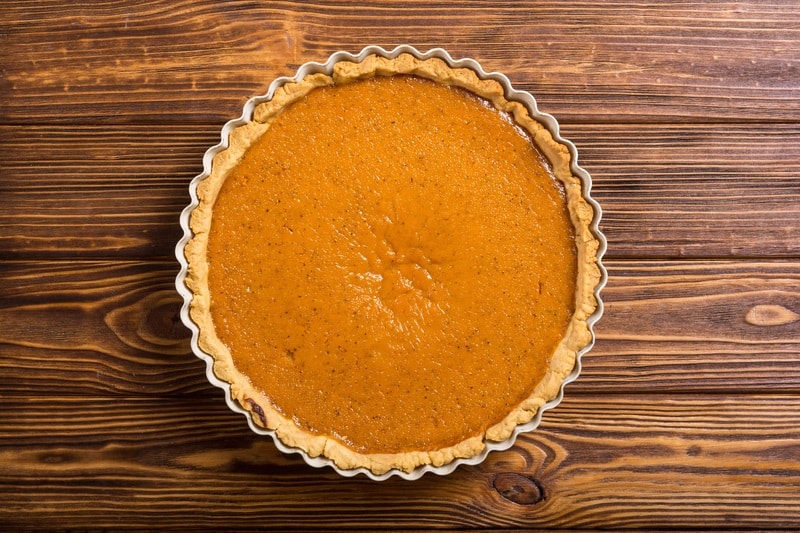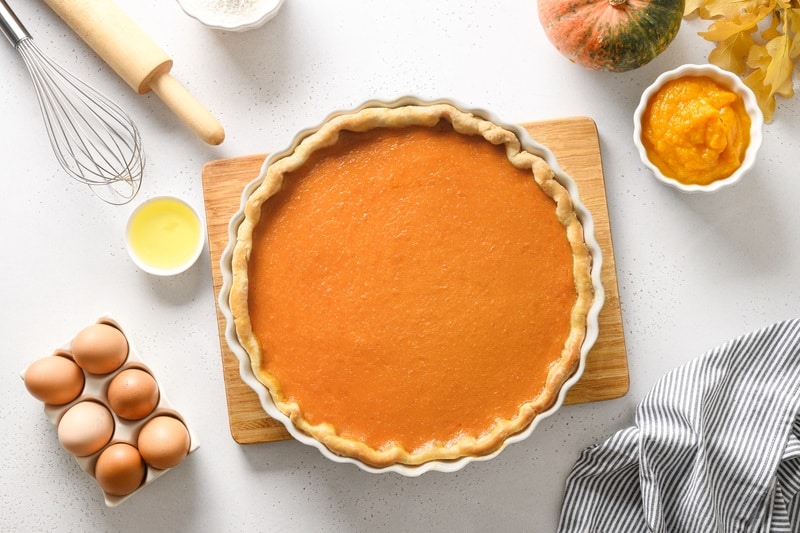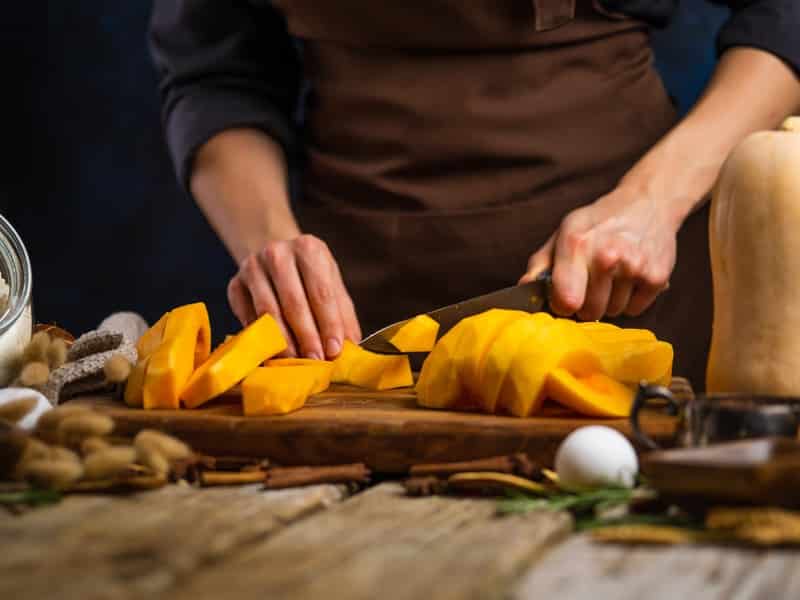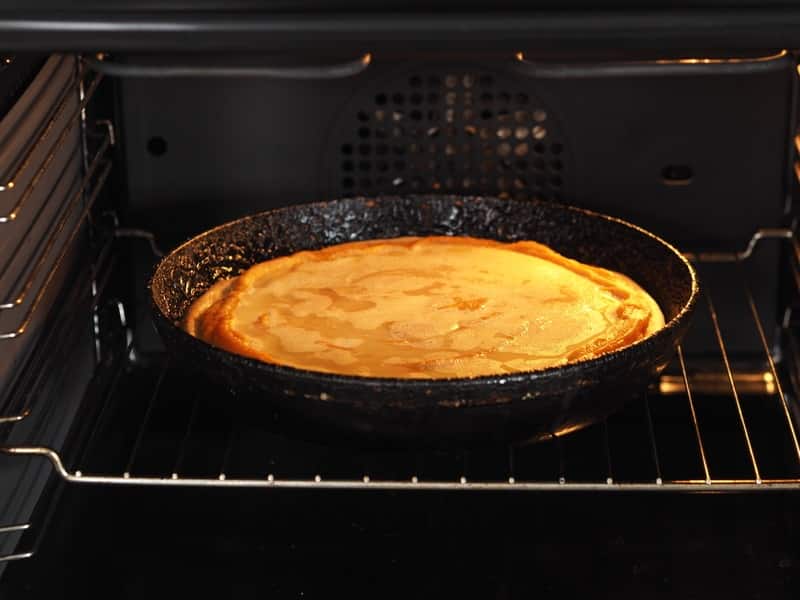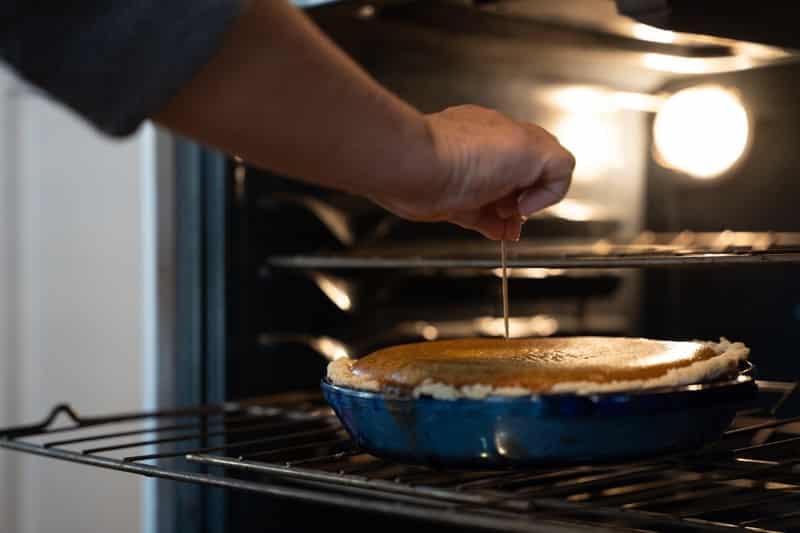Aah – pumpkin pie! A traditional American dessert for high days and holidays. The taste is spicy from cinnamon, nutmeg, and sometimes cloves. It’s also sweet from the special custard filling containing pumpkin puree and brown sugar and rich from the buttery shortcrust pastry base.
The problem with a custard pie filling is that it may turn soggy at times and refuse to set. However, don’t be put off. You don’t need to be an expert baker to produce a delicious pie. You simply need to observe a few basic principles and have a good recipe or two under your belt.
We haven’t provided a recipe here because there are so many online. We encourage you to read the reviews before choosing a recipe and check if others say that it works.
Today we’re going to be looking specifically at why a pumpkin pie filling is sometimes too runny or won’t set at all.
Reasons My Pumpkin Pie Won’t Set
There can be several reasons for the problem. Don’t worry though, the mistakes you are making are bound to be common ones. Some of these are as follows:
1. Not using enough egg in the filling.
The eggs are the main thing that causes the filling to set. As you know, cooked eggs become a soft solid consistency, as they do when you scramble them or make an omelet.
The pie recipe takes advantage of this property and uses eggs to set the pie. So don’t be tempted to leave the eggs out because you’re worried they might give the pie a funny taste. They won’t.
The eggy flavor is masked by the strong flavors of the spices and other ingredients. Most pie recipes call for 3-4 eggs.
2. You may not have left the eggs out completely but you may have used smaller ones than the recipe calls for.
If it asks for extra-large eggs, don’t use medium-sized ones. If you only have smaller eggs, add an extra one to the filling mixture.
3. A debatable reason is the use of fresh pumpkins in place of canned ones.
A fresh pumpkin has varying factors. Each differs according to its sweetness, taste, and water content. If you are making pumpkin pie for the first time, use canned puree.
Later when you are more confident you can use fresh pumpkin. If you do, we recommend roasting rather than boiling or steaming it to remove as much water as possible. You want a dryer puree rather than a wet one.
Plus, roasting the pumpkin creates a sweet caramelization that’s hard to beat. If yours seems watery, put it into a strainer lined with a piece of muslin and let it drain until some of the water has gone.
4. Have you perhaps made the mistake of putting a hot pie straight into the refrigerator?
This will cause your pie to become soggy. After the pie is taken out of the oven, let it cool down at room temperature for a few hours.
This allows the pie to settle down perfectly and for any steam to evaporate. The edges may get cool quickly but be sure to leave it out of the fridge until the center is also cold.
5. A simple reason for your pie not setting may be that you haven’t cooked the pie for long enough to set the custard.
While the edges will set fairly quickly, the center takes a while longer. If you are worried that the crust is becoming too brown meanwhile, shield the edges with foil.
6. Make sure you haven’t set the oven at too high a temperature. If it is too hot, the edges of the pie will cook and burn before the middle is set. A good temperature is 350˚F or 180˚C.
7. Do you think only undercooked pie would be watery? A watery pie can also occur because of overcooking. The custard may curdle at high temperatures or when the pie gets cooked for too long.
8. If your crust is soggy, it may be because you didn’t bake it blind before filling it. In this process, you bake the crust partially before filling it. This makes sure that the crust will not become soggy once the filling has been put in.
How To Fix These Problems?
While some of these issues can be fixed, some cannot and it is better to be careful when making the pie than to worry about it later on.
1. Firstly, you should understand how to tell when the filling is cooked before removing it from the oven.
When the baking time is up and the pie looks golden and done, give the pie a little shake. The filling should be set firmly around the edges and the center should still be a little jiggly. This is the type of texture you should look for.
The movement should be gelatin-like instead of runny. Think of a set jello consistency. This method depends on your judgment and experience, but what’s better than human judgment when it comes to cooking?
2. If you’re unsure, you can use an oven thermometer to check the temperature of the pie center. If it reads 175 degrees, then it is ready to be taken out of the oven.
3. A quick way to check the texture is the toothpick method. Although it is extensively used in baking cakes, you can try it here too. Insert a toothpick into the middle of the pie. If it seems wet and the toothpick comes out with filling on, it’s not done.
4. Don’t worry if the filling is slightly wobbly when you take it out of the oven. It settles and firms up more as it cools.
We hope these pointers will help you with getting your pumpkin pie set. Please don’t lose heart. With time and experience, you will learn to make a delicious and perfectly set pumpkin pie!
